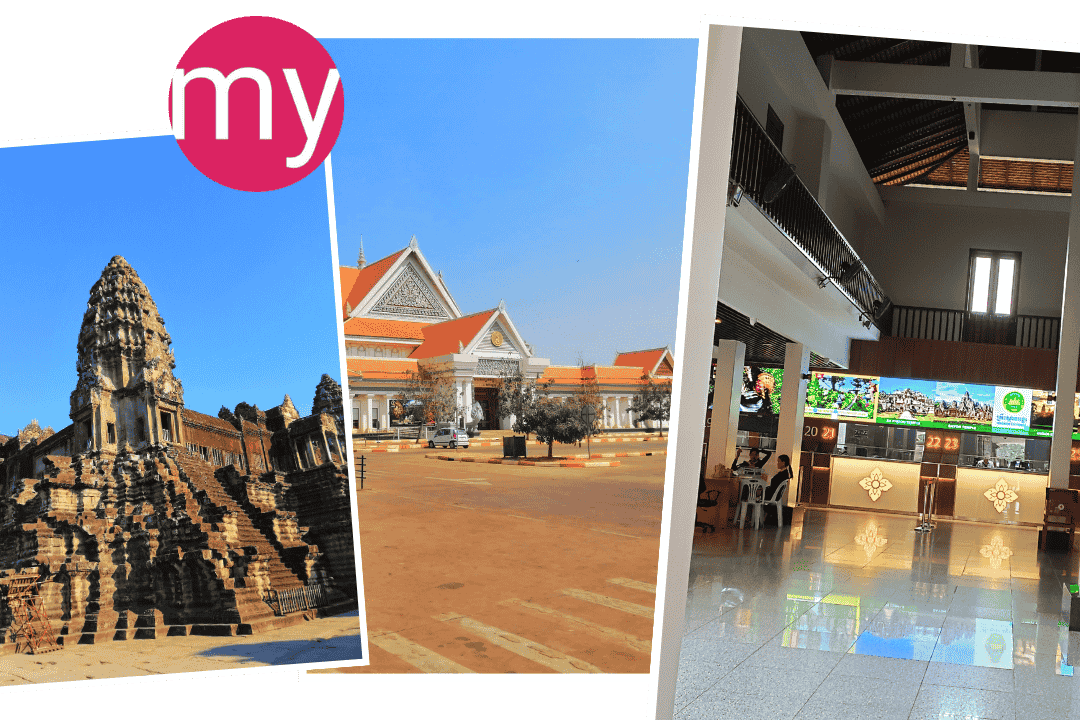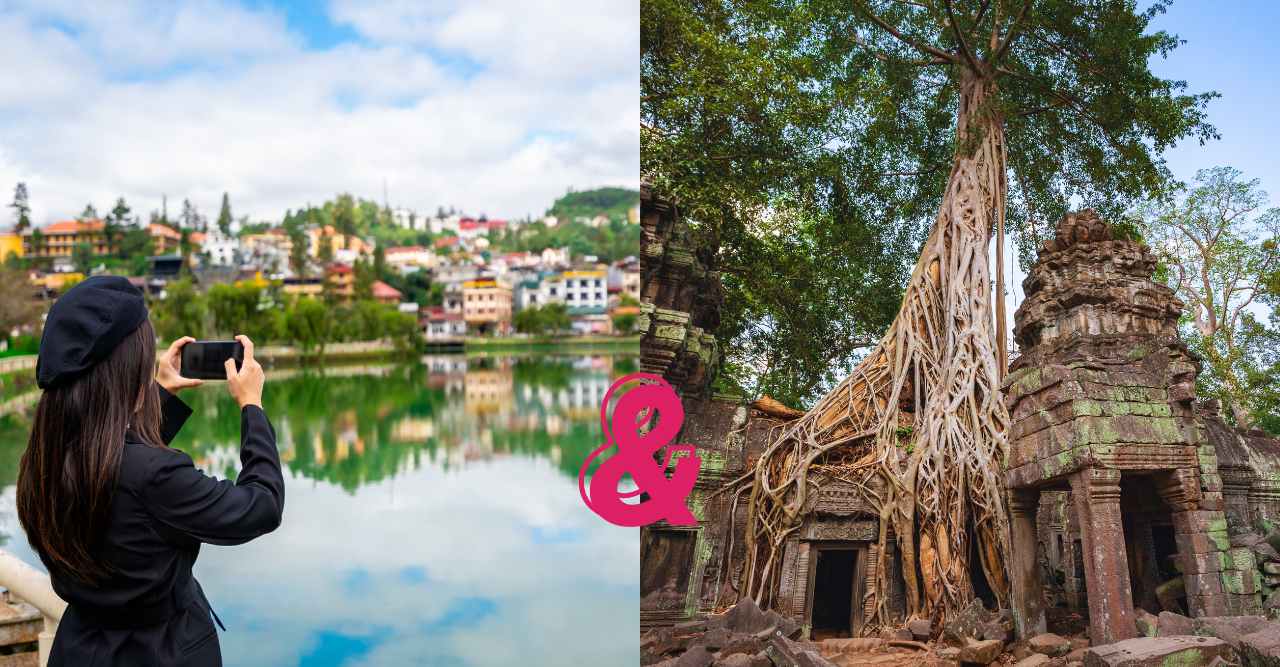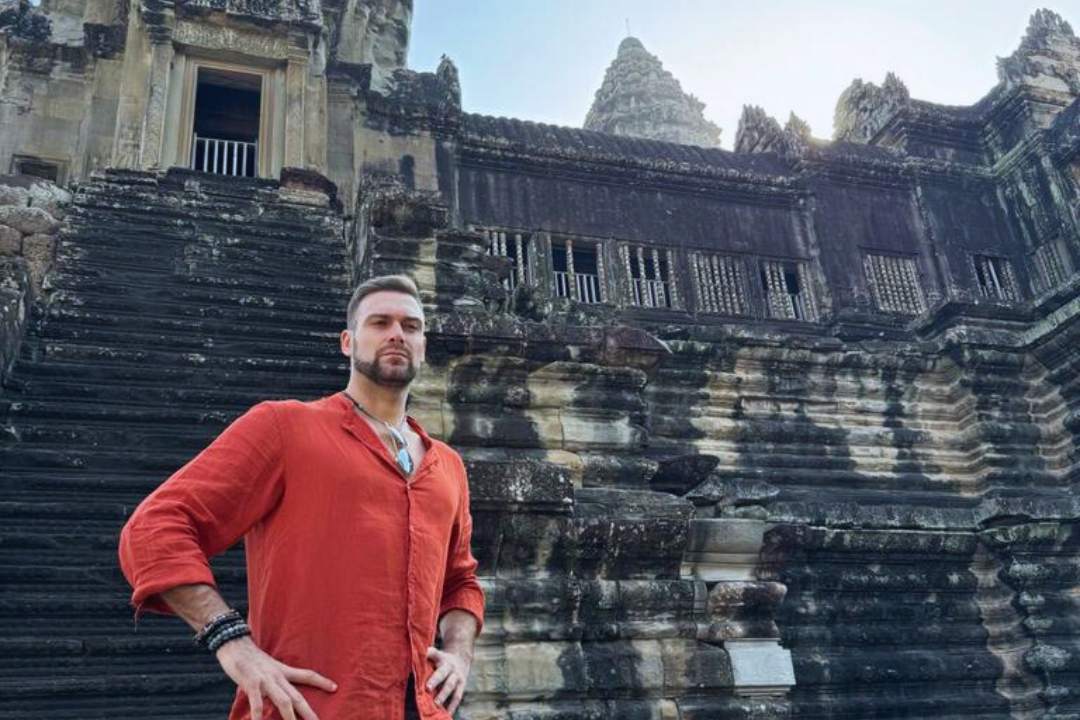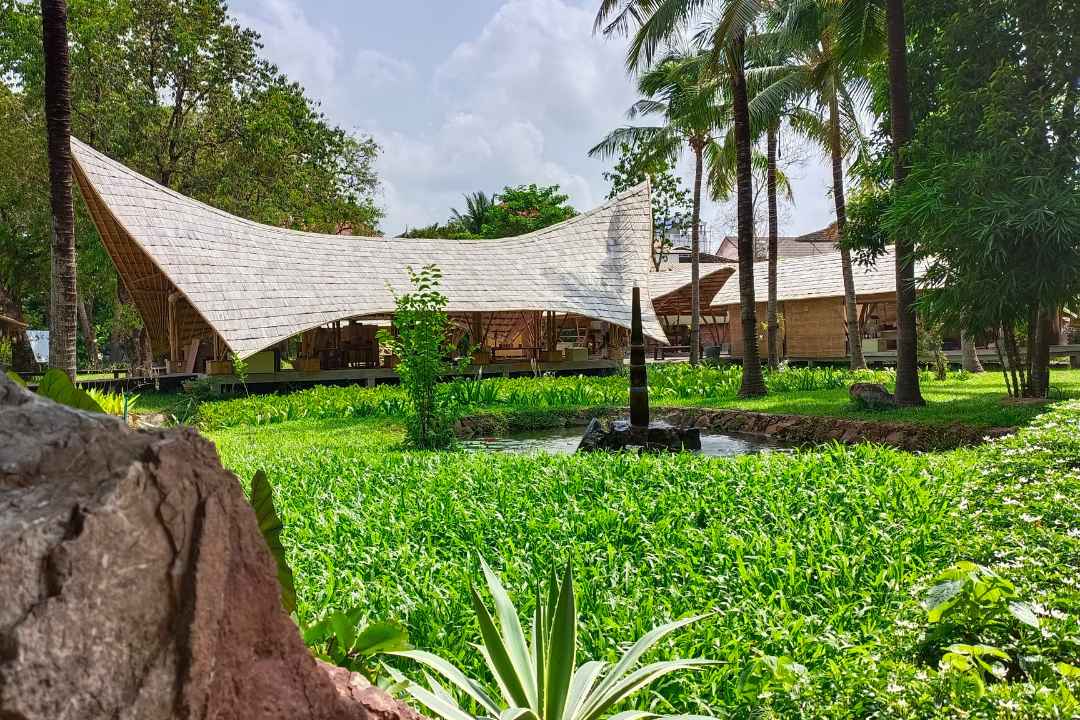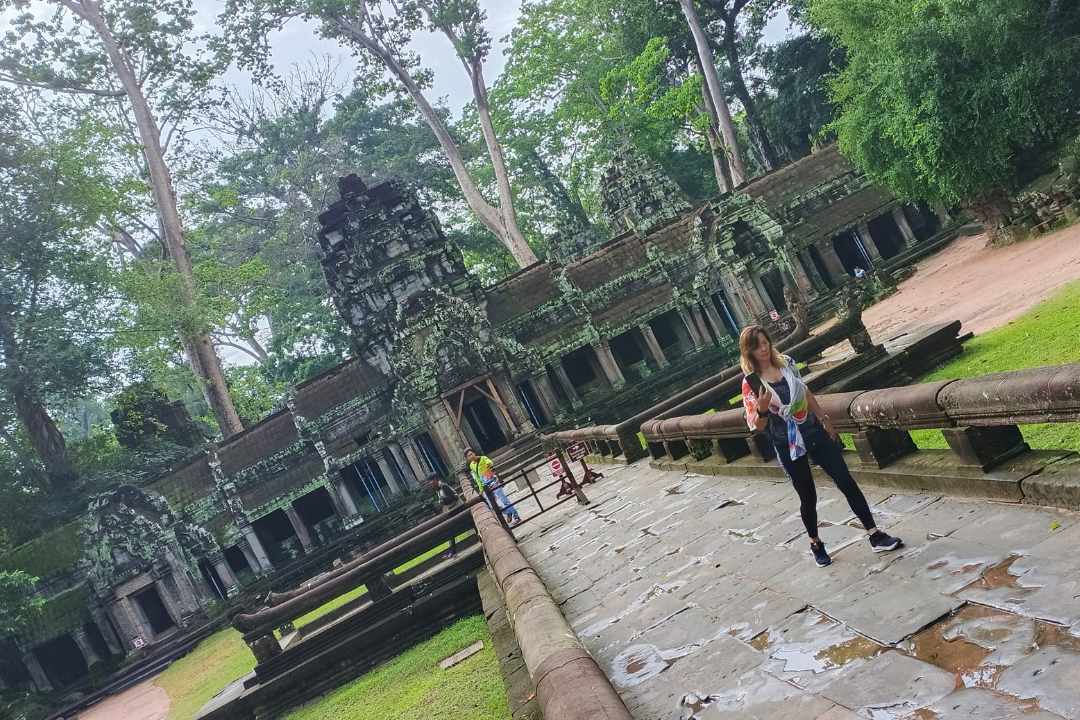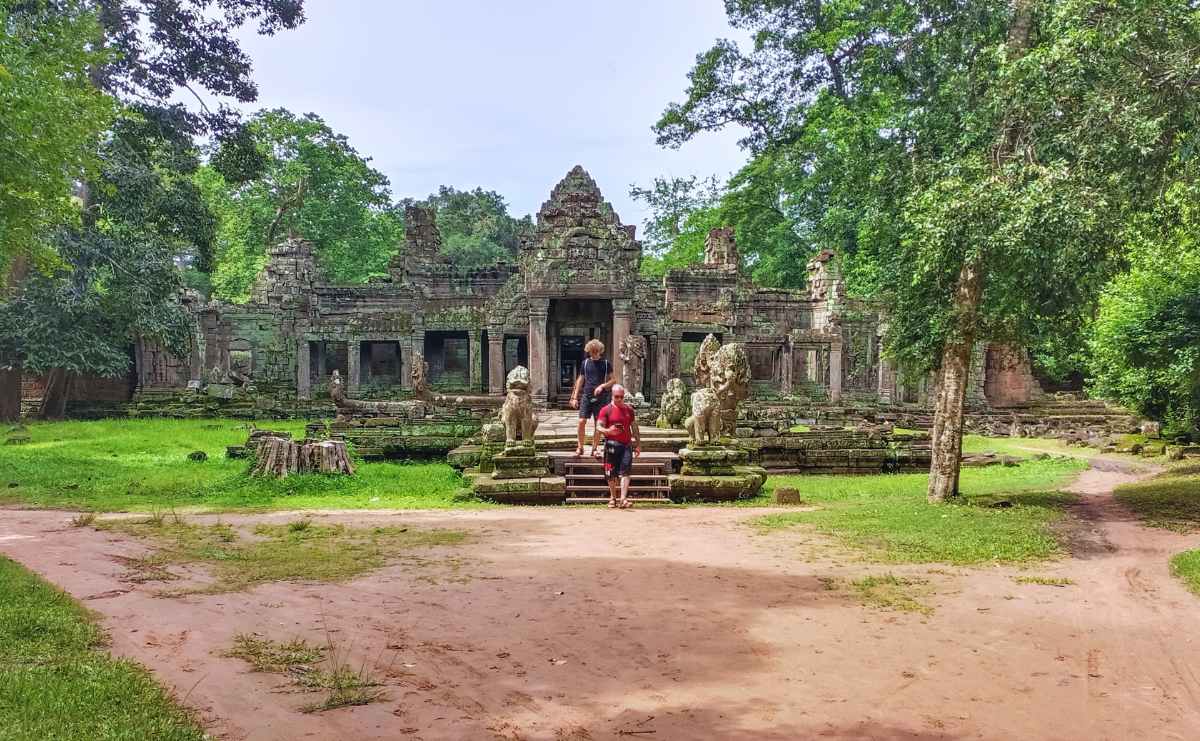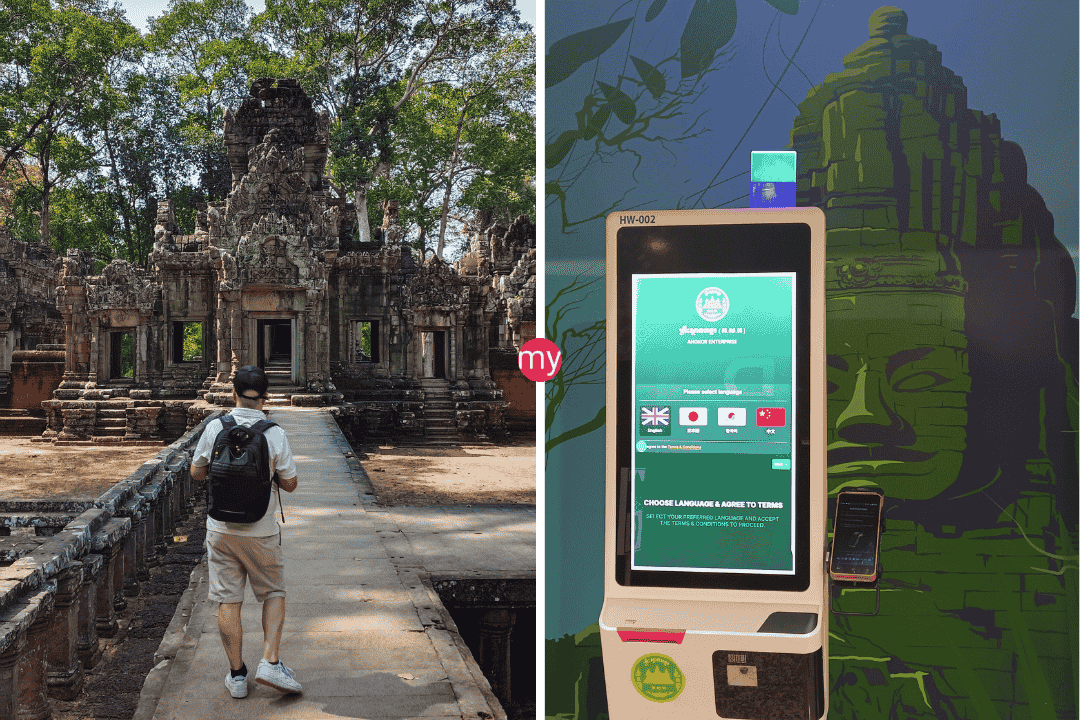Angkor Wat Timeline: Key Milestones in the Rise of Cambodia's Iconic Temple
Unlock the Tasty Tradition: How This Steamed Banana Sticky Rice Cake is Stealing the Spotlight in Cambodian Celebrations!
Buckle Up for a Wild Ride Through 900 Years of Jaw-Dropping History, Scandal and Supernatural Legend
Standing before Angkor Wat, I felt the weight of 900 years of history. This ancient temple is the heart of Cambodian heritage. It has seen empires rise and fall, and has been forgotten for centuries.
It’s a place where history is carved into every stone. It started as a Hindu shrine and became a Buddhist sanctuary. I was amazed by the stories on the bas-reliefs of old times and legendary rulers.
Walking through, I thought about all who had walked here before. The history of Angkor Wat is almost a thousand years long. It’s full of stories of triumphs, tragedies, and supernatural tales.
Let’s go on a wild time journey together. We’ll explore the secrets of this amazing place. We’ll learn about the Khmer empire and how it became a top tourist spot. Get ready for a story you’ll always remember!
The Birth of Angkor Wat – A Monumental Beginning
I’m amazed by Angkor Wat, the biggest religious monument in the world. It covers over 400 acres. This amazing place was built during Suryavarman II’s time. It shows the best of Khmer architecture and power.
Suryavarman II’s Vision
In the early 12th century, Suryavarman II started building Angkor Wat. He wanted a huge Vishnuite shrine. It would be both a state temple and a capital city.
The project was huge, showing the Khmer Empire’s strength. It was a big dream.
Construction Challenges and Triumphs
Building Angkor Wat was hard. It was huge and had a complex design. But the Khmer builders did a great job.
They made a masterpiece that has lasted over 900 years. Their skill is seen in every stone and carving.
Religious Significance: From Hindu to Buddhist Temple
Angkor Wat’s story is interesting. It was first a Hindu temple for Vishnu. Then, it became a Buddhist temple.
This change shows how the Khmer Empire’s beliefs changed. Today, its carvings and statues tell of this shift. They show both Hindu and Buddhist influences.
Visiting Angkor Wat is amazing. It has lasted through many hard times. Now, it’s a UNESCO World Heritage site. Over 500,000 people visit it every year.
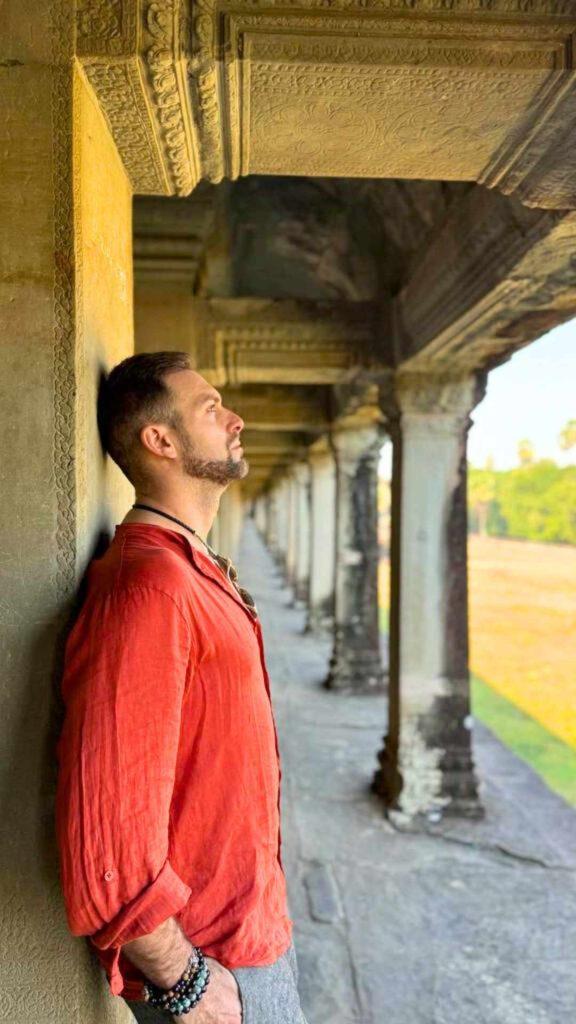
Editor’s Note: This Angkor Wat timeline was last updated in August 2024 by our team of Siem Reap experts. We strive to provide the most accurate and up-to-date information for history buffs and adventure seekers planning their ultimate Angkor Wat trip!
Khmer Empire’s Golden Age: Rise and Expansion
I’m amazed by the Khmer empire timeline. It shows how humans can dream big and achieve great things. From 802 CE to 1431, the Khmer empire grew and shone brightly. It was at its best from the 11th to the 13th centuries.
Jayavarman II started the Angkor civilization in 802. He said he came from the rulers of Funan. This began a great empire. Indravarman I, from 877 to 890, built the Bakong temple. It was the first big stone temple in Cambodia.
Yasovarman I, from 890 to 910, made Angkor the center of Khmer life. It became a huge city, almost as big as today’s cities. It was built over a thousand years ago.
Suryavarman II, around 1113, made the empire as big as it could get. He took over parts of Thailand and Laos. He also started building Angkor Wat, the most famous Khmer temple.
Jayavarman VII, from 1181 to 1220, took the empire even higher. He made the empire bigger and built a lot. He made the Bayon temple and 102 hospitals across the kingdom.
At its biggest, the Khmer empire was huge, covering 1,000,000 square kilometers. It went from the Indian Ocean to China’s Yunnan Province. It covered most of Southeast Asia. The Khmer civilization’s work still amazes and inspires us today.
Angkor Wat Timeline: From Glory to Abandonment
Let’s explore Angkor Wat’s history together. This amazing temple has seen many changes. From its bright start to being left behind.
Angkor Wat: A Journey Through Time
Angkor Wat started in the 12th century. It was built from 1113 to 1150 AD. It was a huge achievement in Khmer architecture.
The temple’s walls were almost half a mile long on each side. This was the best time for the Khmer people. Angkor was the biggest city before the industrial age.
Gradual Decline
From the 13th to 15th centuries, the Khmer empire started to decline. This was due to political issues, environmental changes, and trade changes. But, Angkor Wat stayed a key religious place. It changed from a Hindu to a Buddhist temple.
Abandonment and Jungle Reclamation
By the 16th century, people left Angkor Wat. The capital moved, and the temple was forgotten. For years, it was covered in jungle. Its beauty was hidden.
In 1586, a Portuguese friar named António da Madalena saw it again. The Angkor Wat timeline shows how empires rise and fall. Walking through it now, I see its lasting impact after 900 years.
Looking to immerse yourself in the rich history of Angkor Wat? Check out these top Angkor Wat tours for an unforgettable adventure:
- Angkor Wat Sunrise Tour: Watch the sun peek over the ancient temple spires on this magical private tour.
- 1-Day Angkor Wat Tour: Explore the best of Angkor Archaeological Park with a knowledgeable local guide.
- Angkor Wat to Siem Reap Floating Village Tour: Discover Angkor Wat and experience local life on the waters of Tonle Sap Lake.
Legends and Mysteries: Supernatural Tales of Angkor
I’ve always been drawn to Angkor Wat legends. The temple’s dark stone and mysterious feel have led to many supernatural stories over 900 years. Exploring the 400-acre complex, I felt awe and wonder at the mysteries it holds.
One legend says the gods helped build the temple. This explains how 300,000 workers and 6,000 elephants finished it in a few decades. The stone carvings look like they were made yesterday, adding to the mystery.
Walking through the dark corridors, I heard whispers of ghost stories. Some think ancient Khmer kings’ spirits guard the temple. Others say they’ve seen ghosts at 5 a.m., when the temple opens.
The Apsaras, carved dancers, are the most spooky legend. People say they dance at night, their dance echoing through the halls. Looking at their detailed carvings, I wondered if these stories were true.
Angkor Wat Timeline Highlights
- Early 12th century: Construction of Angkor Wat begins under King Suryavarman II
- Late 12th century: Angkor Wat completed as a Hindu temple dedicated to Vishnu
- Late 12th to early 13th century: Angkor Thom built near Angkor Wat under Jayavarman VII
- 14th-15th century: Angkor Wat gradually transitions to a Buddhist temple
- 1860s: French explorer Henri Mouhot “rediscovers” and popularizes Angkor Wat
- 1990s-present: Angkor Wat restoration efforts and tourism boom
Rediscovery and Restoration: A Modern Renaissance
I love the story of how Angkor Wat was found again. In 1860, a French naturalist named Henri Mouhot found the ancient temple. His stories made people all over the world want to see it. This was the start of a new chapter for Angkor Wat.
Conservation Efforts and UNESCO Recognition
Teams worked hard to fix up the temple over the years. Their hard work paid off in 1992 when Angkor Wat got a special title from UNESCO. This title brought more attention and help to save the old buildings.
Preserving Angkor in Modern Times
Keeping Angkor Wat safe is a big challenge today. Too many visitors and environmental issues threaten it. In the 1960s, over a thousand workers fixed it up. It was the biggest project like that in the world back then.
Finding money is still a big problem. For 75 years, French experts led the work on research and fixing things up. Now, there’s a move for Cambodia to manage its own cultural treasures.
Thinking about Angkor Wat’s journey from being forgotten to being famous is amazing. The hard work of those protecting it means we can still see its beauty. The story of its rediscovery and keeping it safe for the future is truly inspiring.
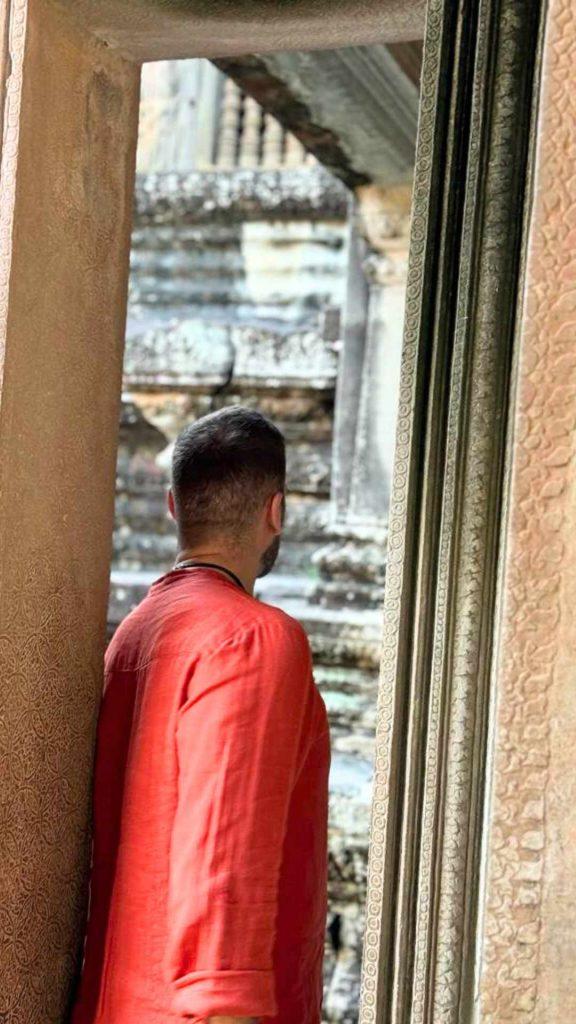
Angkor Wat is amazing. It’s the biggest religious site in the world, seen by millions. It’s Cambodia’s treasure, loved by many, and often shared online.
Now, it’s a popular spot for tourists. People come to see its many buildings and cross a big bridge. They learn about old Hindu and Buddhist art and culture.
Scientists are still learning about Angkor Wat. They study its water systems and buildings. This helps us understand the old Khmer Empire better.
Angkor Wat is a symbol of Cambodia’s culture, protected by UNESCO. A group works to keep it safe while helping the area grow. Thinking about Angkor Wat’s story makes me see its beauty and importance to us all.
Featured
Explore more on My Siem Reap Tours
Koh Ker and Beng Mealea guided tour | Banteay Srei temple tour semi-private guided tour | Angkor Wat Sunrise shared tour | Koh Ker and Beng Mealea guided tour | Morning Siem Reap floating village tour | Afternoon Siem Reap floating village tour | Private Angkor Wat special tour | Kulen Waterfall small group guided Tour | Private Angkor Wat mix temples photo tour


